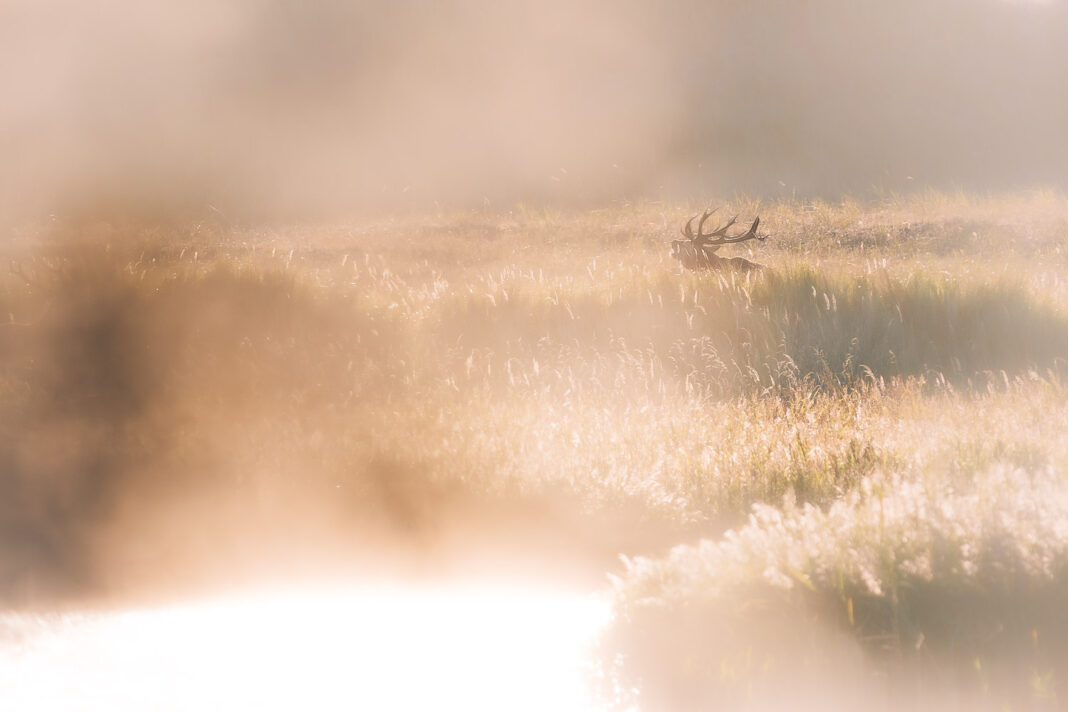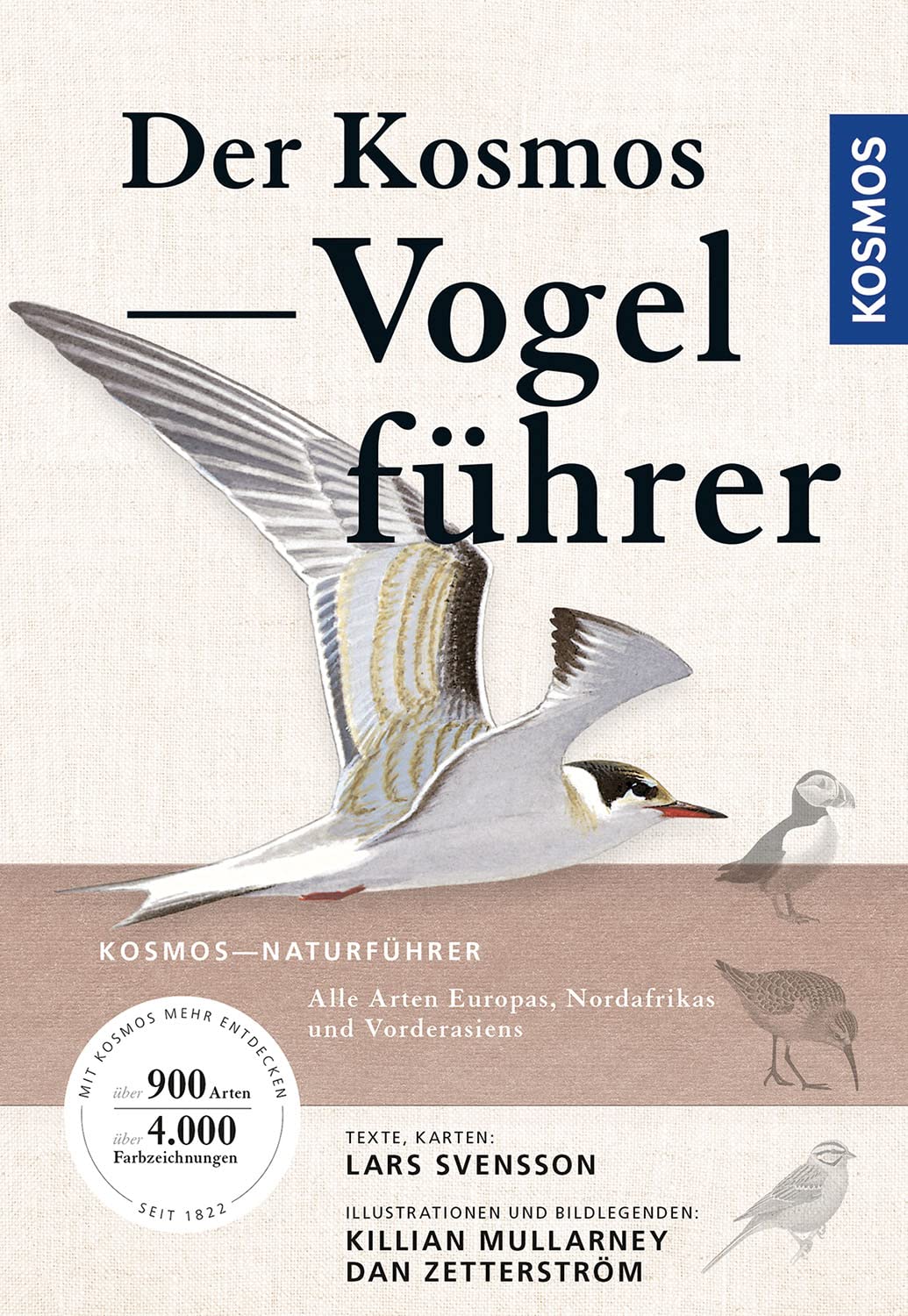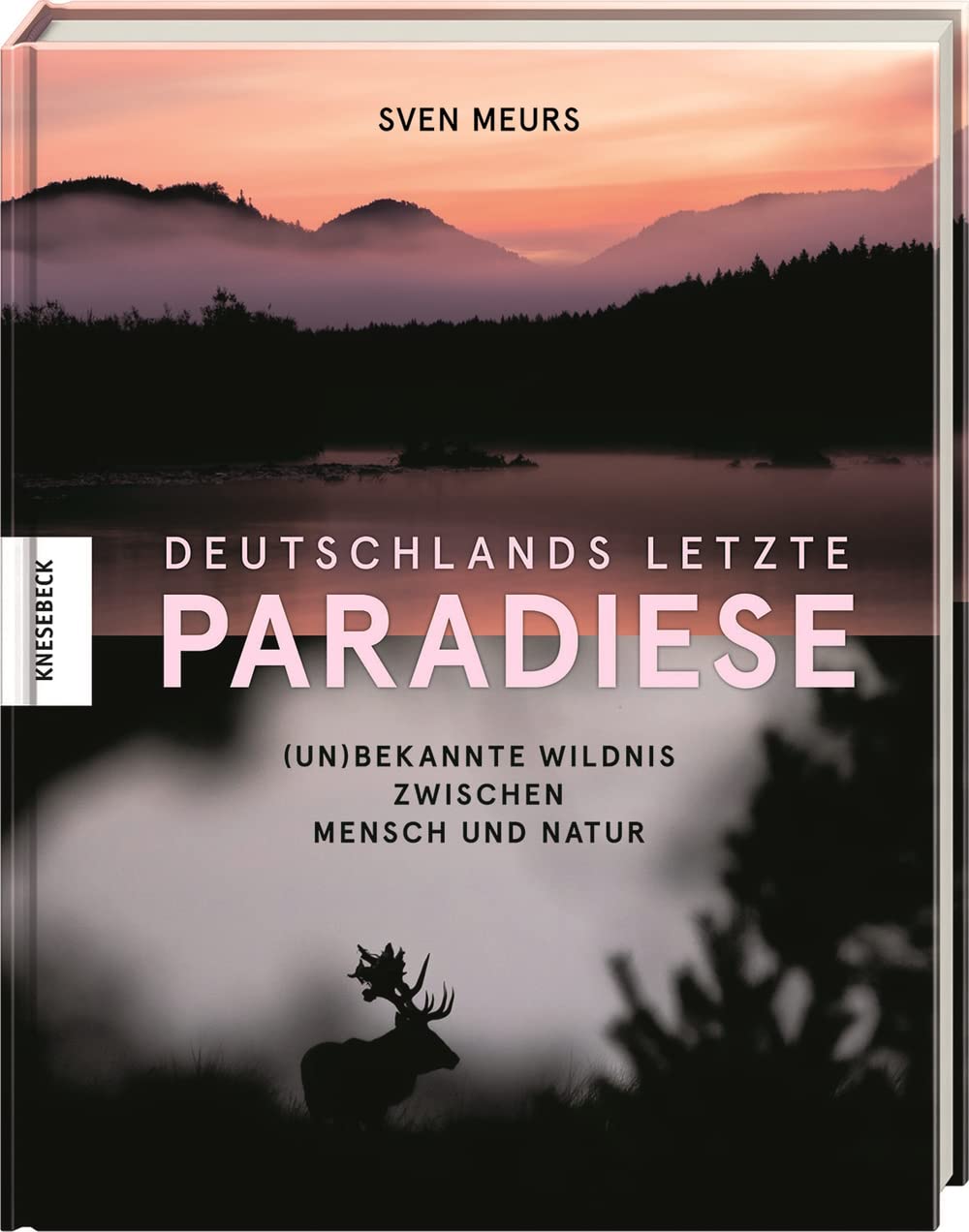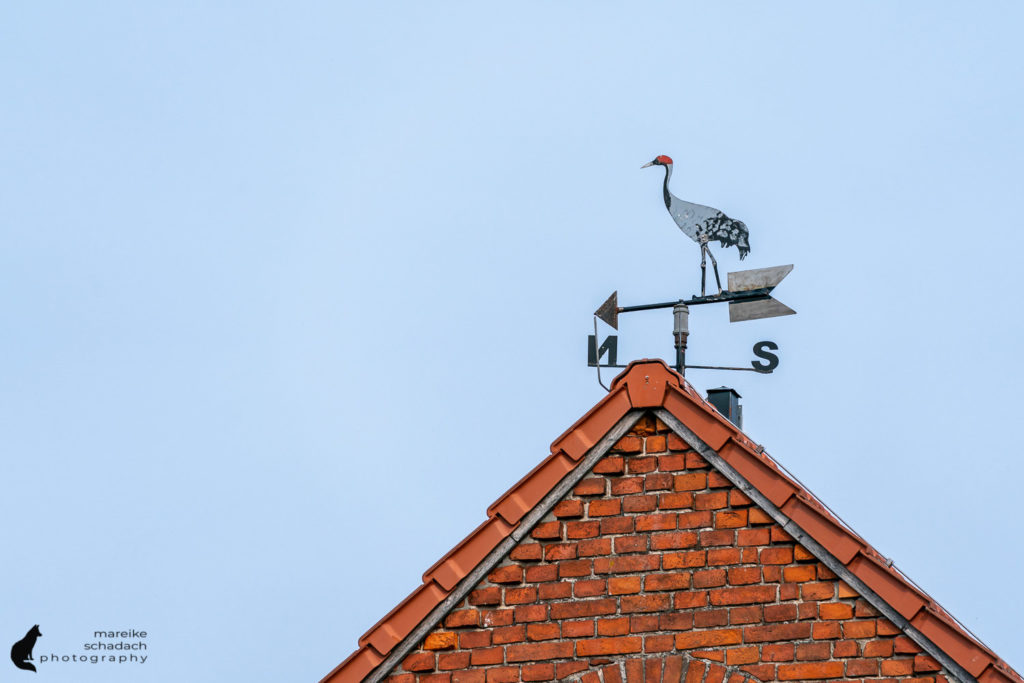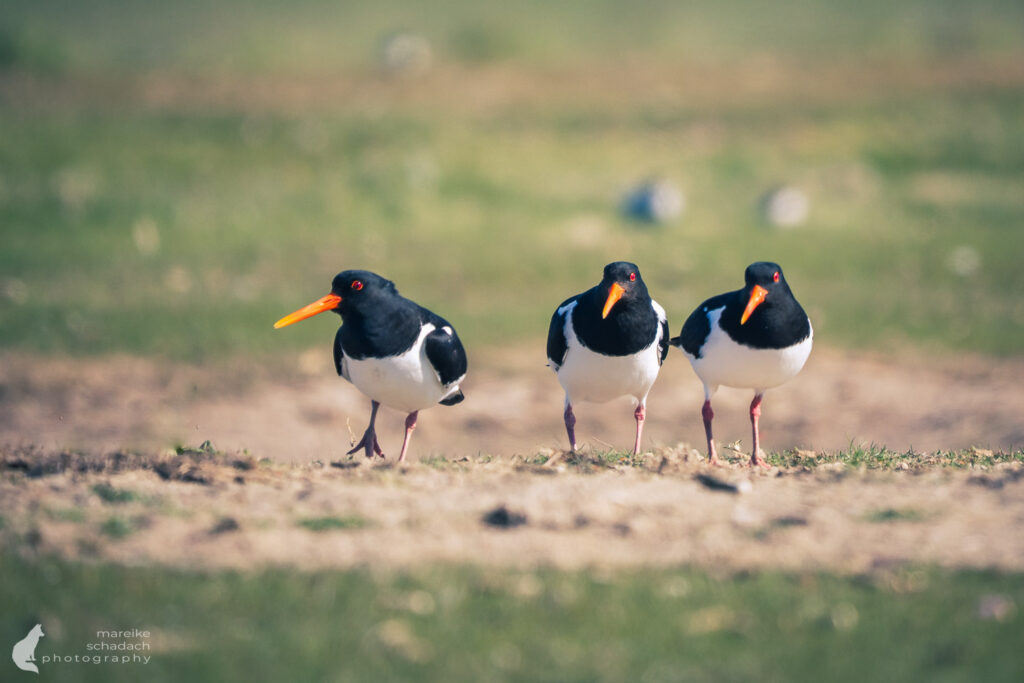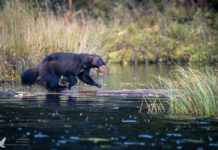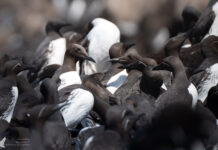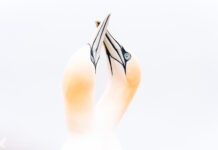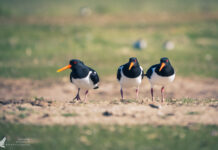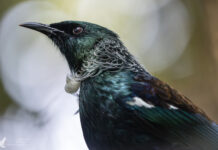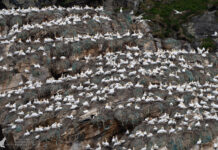Germany. Between the Baltic Sea and the Bodden lies the Darß – a peninsula that seems tailor-made for nature observation. When the leaves change color in autumn and fog rolls over the meadows, a spectacle begins that fascinates visitors every year: the deer rut. The bellowing of the red deer echoes through the dune forests and across the wide clearings as the mighty animals compete for the does.
Unassigned, unpaid advertising. The article contains affiliate links.
An Autumn Morning on the Darß
It is still cool when I arrive at the beach shortly after six in the morning. The sun is already announcing its arrival over the sea with bright orange colors, and seagulls and crows are searching for their breakfast among the washed-up seaweed. I hurry past them. For me, coffee from my thermos and a roll from yesterday will have to wait until I reach the former emergency harbor of Darßer Ort. The harbor facilities here have since been dismantled, and the long wooden pier is said to be one of the best places on the Darß to photograph deer.
Arriving at the observation platform, I join the other early risers with my camera tripod. The coffee will have to wait. First, I scan the area. Are there any deer to be seen yet? All I can hear is the roar of the sea, blown directly into my ears by the strong east wind. After a few minutes, I see antlers peeking out of the grass through my camera's viewfinder, then the head, shoulders, and torso of a stately deer. It bellows, but I still only hear the wind and the surf of the sea. What a beautiful start to the day. I pour coffee into my mug and unwrap my sandwich.
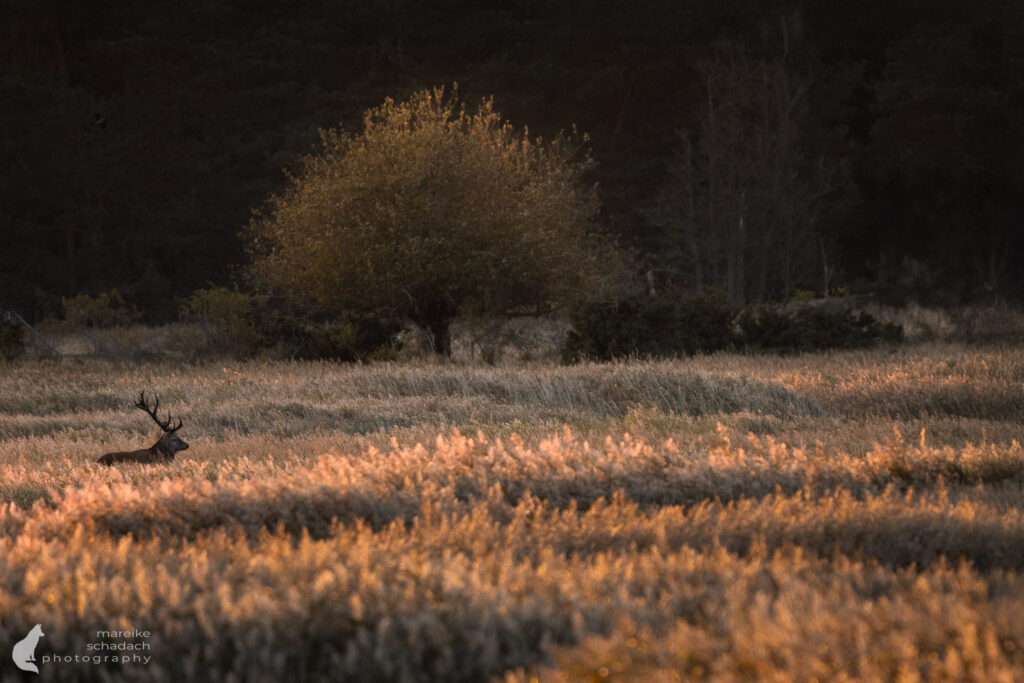
Moments like these make the Fischland-Darß-Zingst peninsula unique in September. Here, where the forest, Bodden lagoon, and Baltic Sea meet, the deer rut is a beautiful natural phenomenon that can be experienced firsthand. The Darß forest and the dunes at Darßer Ort are one of the few landscapes in Germany where you can experience the animals in the wild so close up – not hidden in dark forests, but right on the coast.
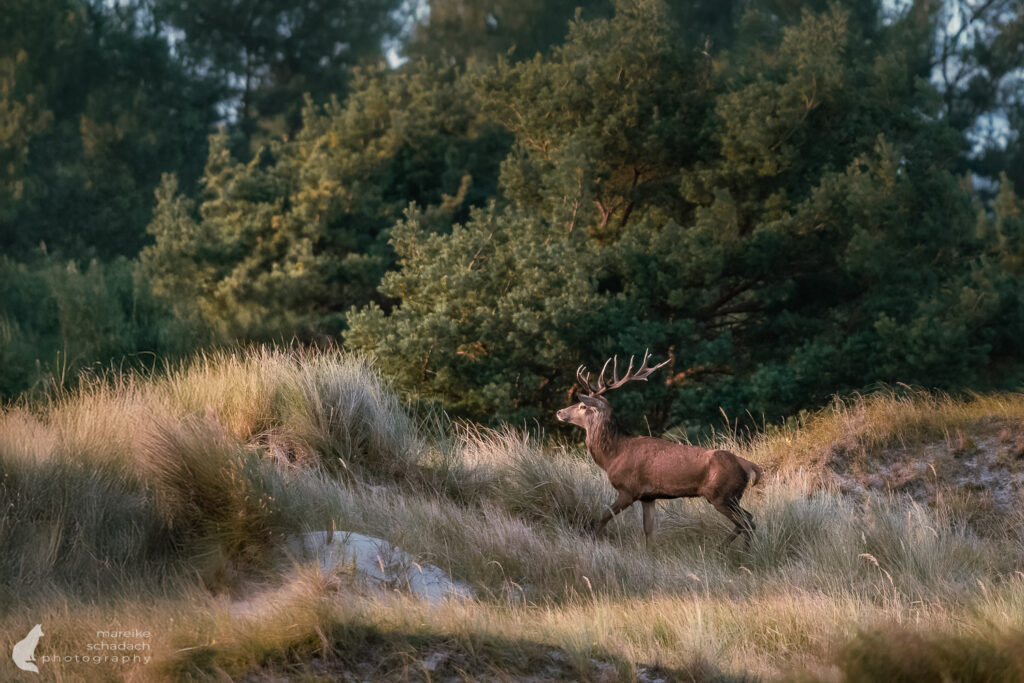
The former Darßer Ort Emergency Harbor
In 1962, a military harbor was built in the beach lake located here. Four years after the national park was founded, the military harbor became the Darßer Ort Emergency Harbor in 1994 and served as a shelter for recreational boats and smaller ships. However, the offshore coastline continued to grow, and the dredging of the shipping channel led to conflicts with the protected area. Eventually, the port facilities were dismantled and left to nature in 2024. Only the access road to the beach lake remains, now leading to a slightly elevated wooden walkway with an excellent view of the deer on the opposite shore.
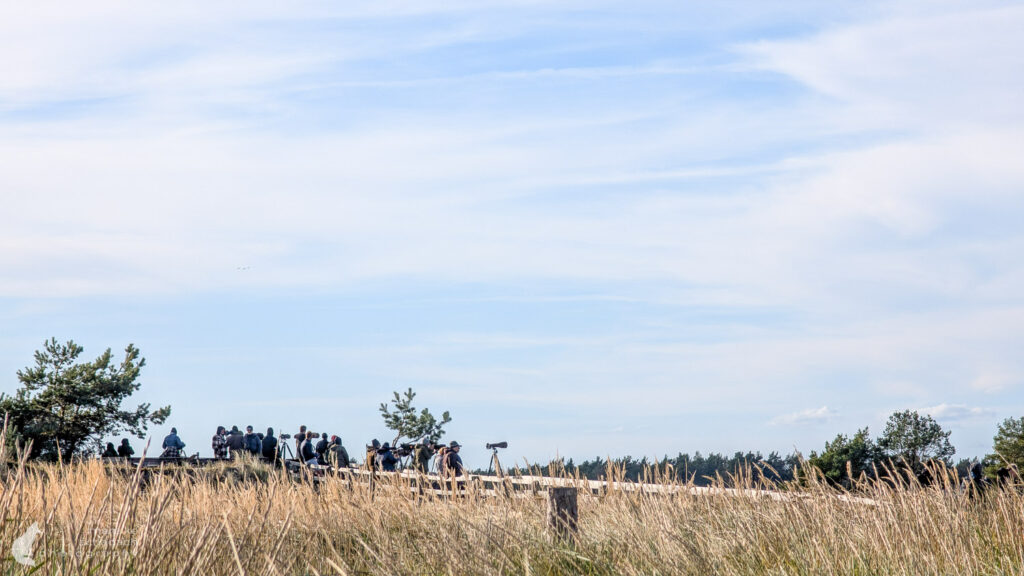
The Landscape – Forests, Dunes, Water
Formation of the Peninsula
The Fischland-Darß-Zingst peninsula is a young piece of land, formed after the end of the Weichselian glaciation approximately 12,000 years ago by sediment deposits, currents, and storm surges. Where individual islands once lay, wind and water pushed sand together to form headlands. In the 14th century, rivalries with Rostock and Stralsund led to the closure of inlets between the islands, turning Fischland and Darß into a peninsula. During the Baltic Sea storm surge in 1872, the Prerow stream silted up and the island of Zingst also became part of the peninsula in 1874 when the stream was finally filled in. Today, the Darß juts out into the Baltic Sea like a hook, forming a 45-kilometer-long wall between the Baltic Sea and the Bodden waters. At its westernmost end lies Darßer Ort, a headland that continues to be shaped by the sea year after year.
Visitors to the Darß peninsula experience a diversity that is rare in Germany. Coastal forests, windswept dunes, wide beaches, and quiet lagoon shores alternate within a small area. The Darß forest itself covers around 5,800 hectares. At first glance, its mixture of old pine, beech, and English oak trees looks like an ordinary coastal forest. But geological processes have shaped it: shifting dunes cover the forest floor, and ancient storm surges have left behind hollows and depressions where moors have formed.
On the Darßer Ort circular Hiking Trail
After a while, the crowds at the observation platform at the emergency harbor thin out. The deer have also moved on. I pack up and continue on to the entrance of the Darßer Ort circular hiking trail. The six-kilometer trail leads over boardwalks, beaches, and forest paths, through a mosaic of forest, reeds, dunes, the Baltic Sea, and beach lakes. Three more viewing platforms invite visitors to observe deer and birds. I move away from the sea, the surf becomes quieter, and the east wind blows a deep, throaty sound into my ears. The deer are bellowing.

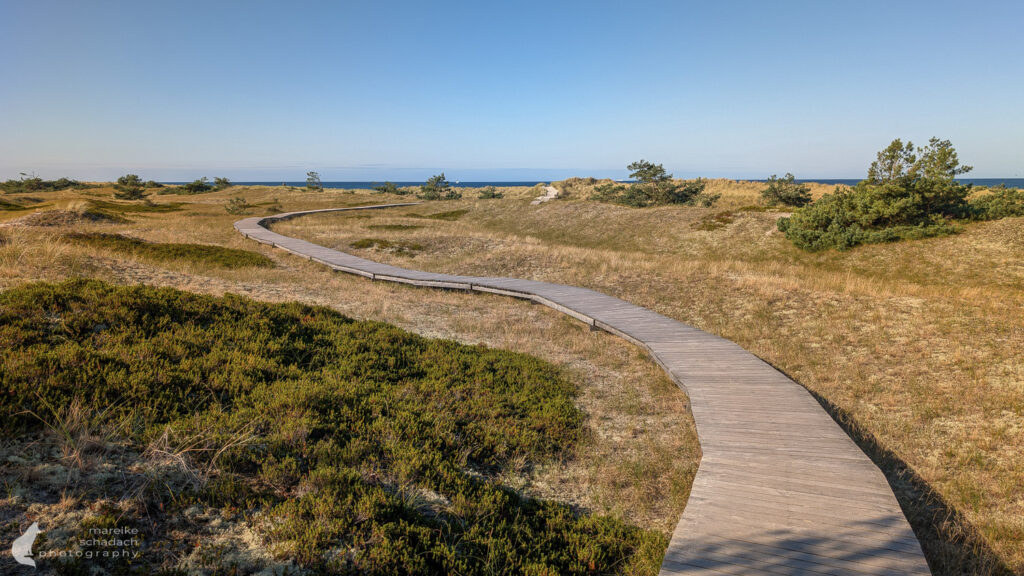
Darßer Ort Lighthouse with the Natureum
Der Rundwanderweg bringt mich bis zum Darßer Ort mit dem 1848 erbauten Leuchtturm und dem Natureum The circular hiking trail takes me to Darßer Ort with its lighthouse, built in 1848, and the
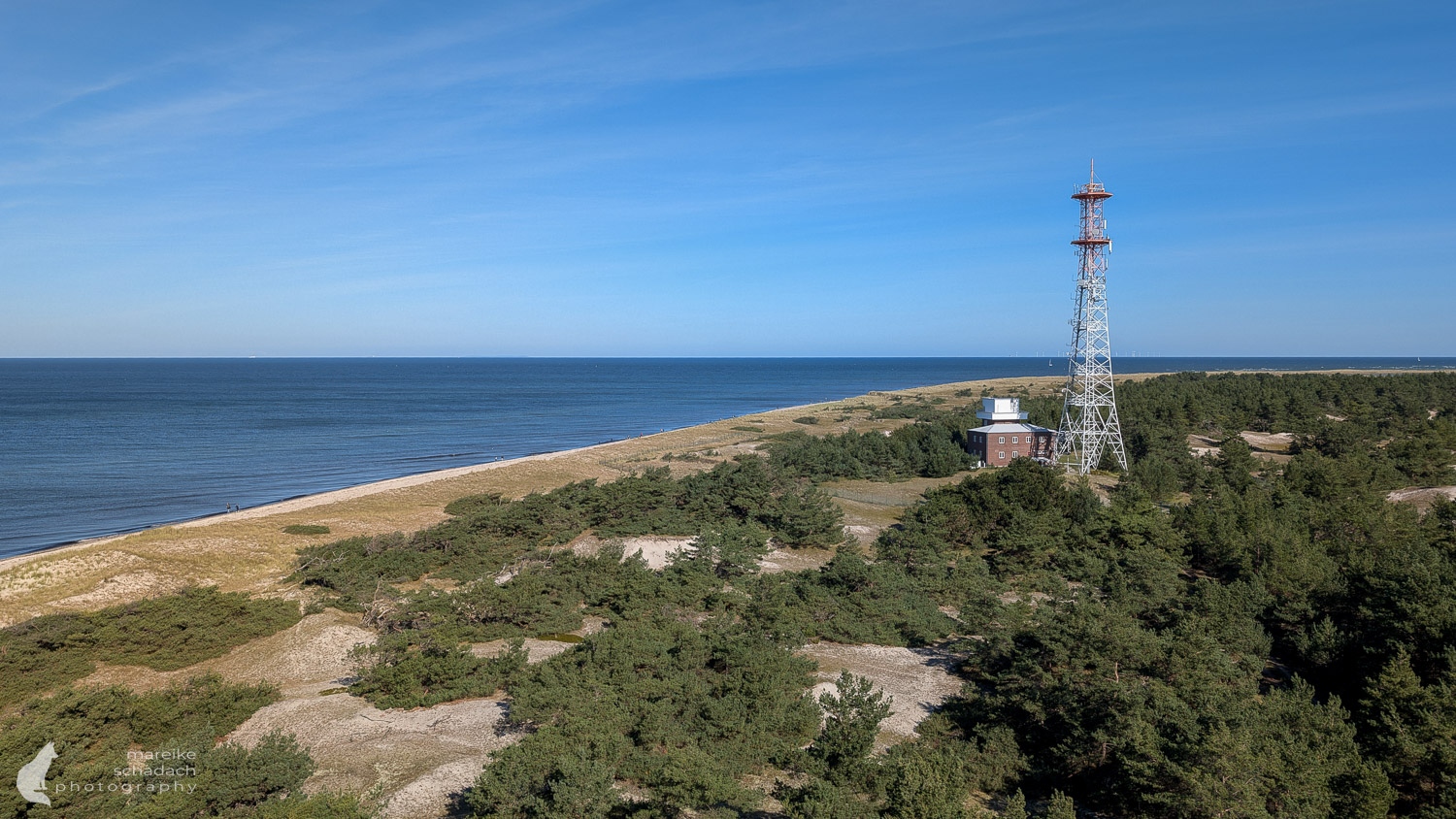
Wind-swept Trees on the West Beach
On the second day, right after watching the deer, I hop on my bike and head to West Beach. The middle path takes me to the bike parking lot behind the dunes. There are only two bikes here, and it's so early in the morning that there's no one else on the beach. I look at the so-called wind-swept trees on the dunes, tall pines whose crowns have been bent to one side toward the land by the constant coastal wind. After a second breakfast on the beach, I take the time to get a little creative with the prism I brought with me.

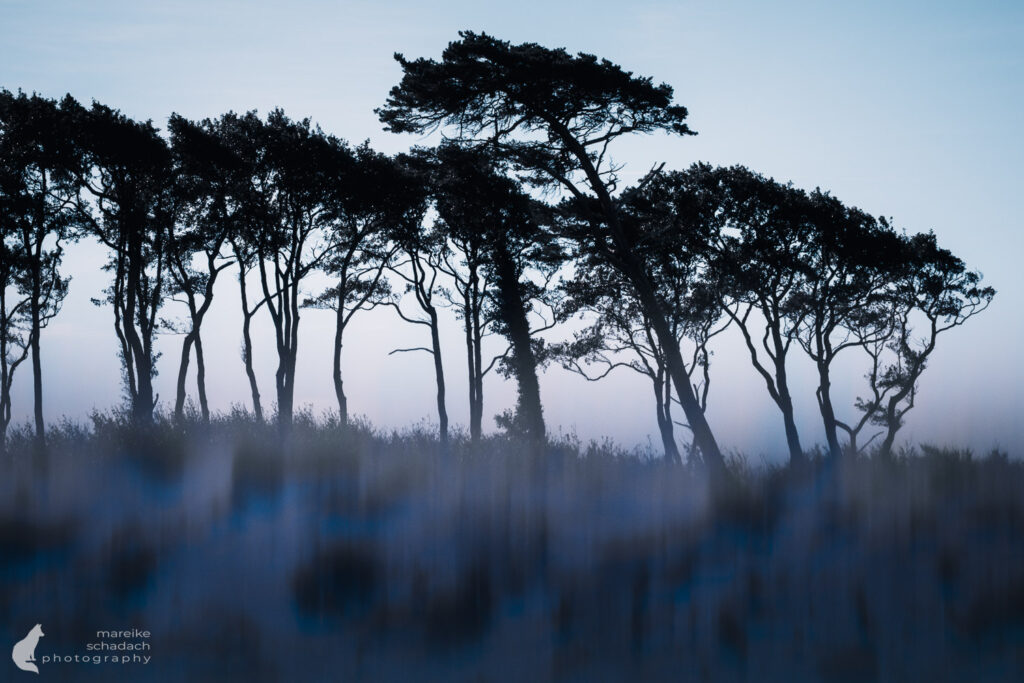

History in the Shade of the Trees and the Sea Breeze
As early as the Middle Ages, fishermen and farmers used the Darß Forest, driving cattle into it and fetching wood for boats and houses. Numerous beech trees, some of them widely spaced and bizarrely grown, remain from this period when the forest was used as pasture. The Darß Forest was particularly exploited by Danish and French occupiers in the early 18th and 19th centuries. The Danes removed all the old yew trees from the forest to use for interior paneling in Rosenborg and Amalienborg palaces. The heathland left behind after the clearing was reforested by Prussian foresters with fast-growing coniferous species.

In the GDR, Darß became a vacation destination for privileged workers and party officials. The town of Prerow was known as the “Mallorca of the East.” During the high season, the beach campground alone hosted up to 10,000 guests. Today, the campground is operated by Ahoi Camp and is set to be expanded. The opportunity to camp right here in the dunes is something very special and is based on special rights of use and agreements that have been made over time with the state of Mecklenburg-Western Pomerania and the MV Foundation for the Environment and Nature Conservation. Guests are encouraged to always use the existing paths when going to the beach or through the camp and not to walk cross-country through the dunes.
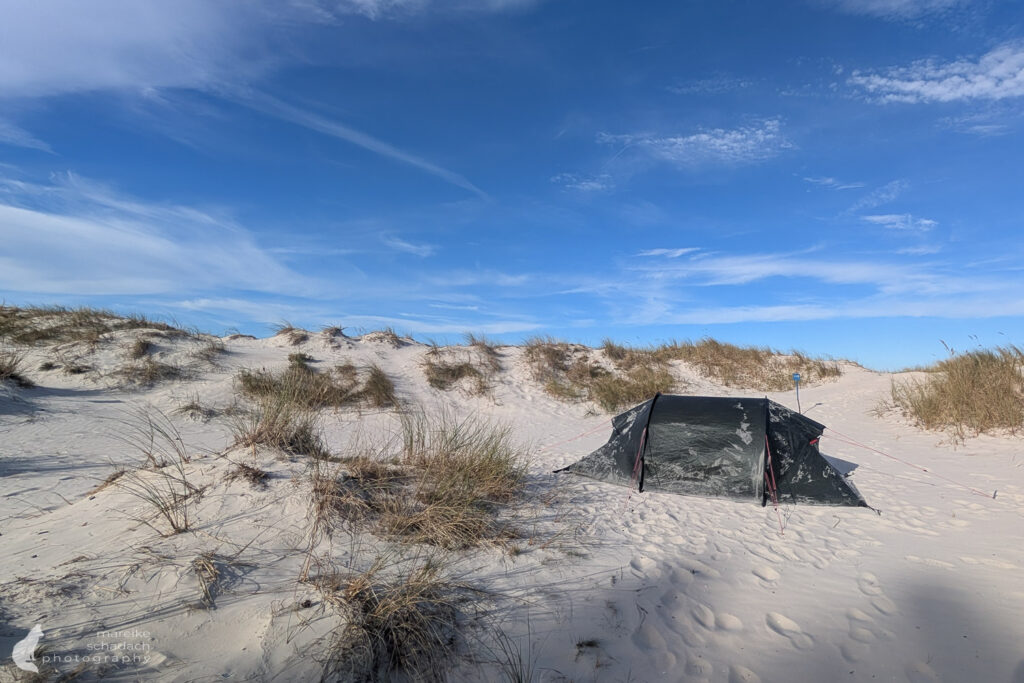
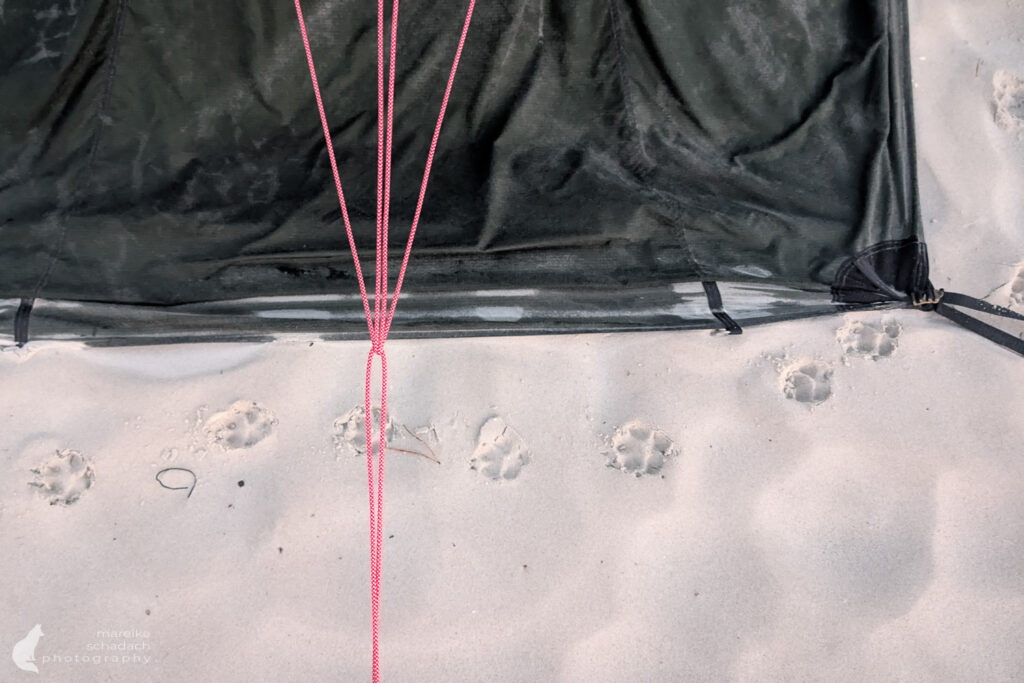
TRAVEL TIP:
If you're still looking for accommodation that really brings you closer to nature, you'll find it at AlohaCamp.
Whether you're exploring the Darß peninsula or the Baltic Sea coast, spending a few days in the Alps, or planning your next stay by a quiet lake, AlohaCamp has special places all over Germany where you can experience nature at its most beautiful.
Vorpommern Bodden Landscape National Park
Since 1990, the region has been part of the Vorpommern Bodden Landscape National Park, which, at 786 km², is the largest national park on the German Baltic Sea coast. At its heart are the Darß Forest and the west coast, where no dykes slow down the dynamics of nature. Here, dunes are allowed to wander, forests plunge into the sea, and beaches disappear. “Let nature be nature” is the motto – and this is exactly what the deer benefit from. The forest offers them cover, the wide Bodden meadows provide food, and the dunes offer peace and quiet.
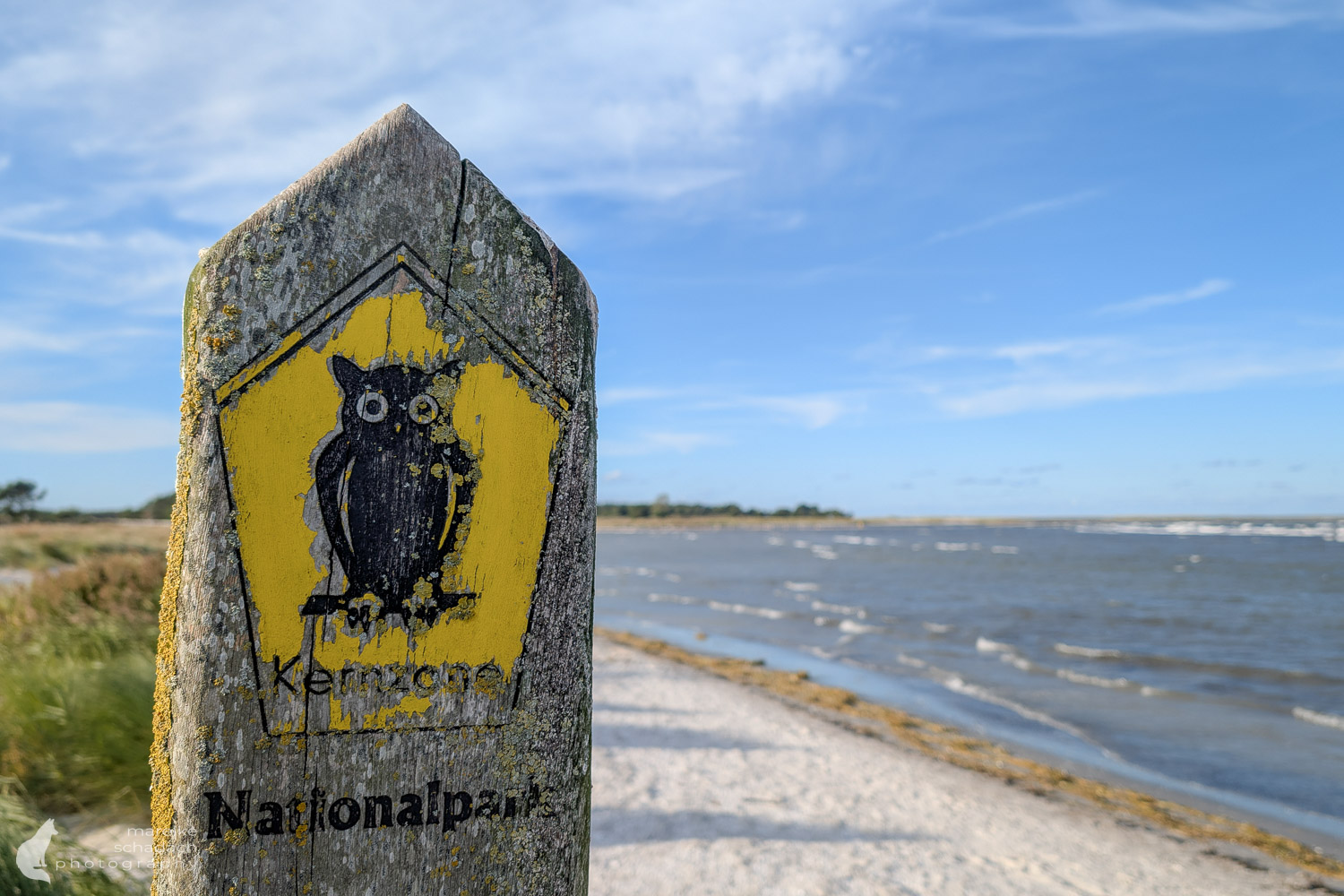
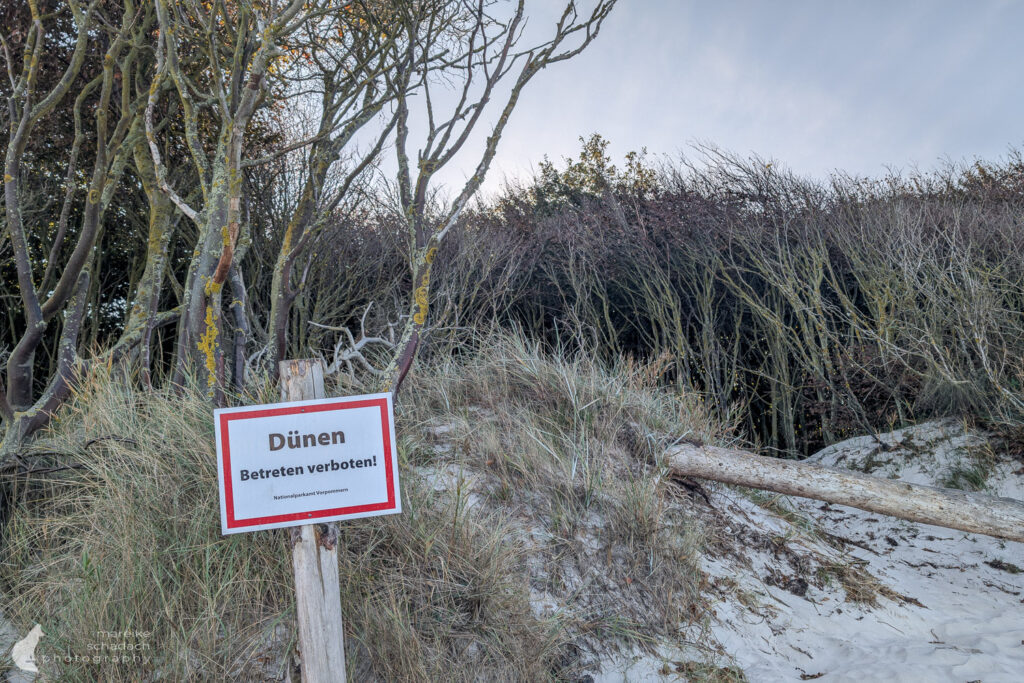
An important goal of the national park is to protect large mammals such as red deer, which live undisturbed in the extensive forest and dune areas. But the Vorpommersche Boddenlandschaft National Park protects more than just red deer. Over 1,300 plant species and more than 160 breeding bird species have been documented here. In addition to deer, wild boars, foxes, badgers, and, more recently, wolves also live in the region. White-tailed eagles regularly circle above the Bodden, and sanderlings and oystercatchers rest on the beaches. The annual crane migration is particularly impressive: up to 70,000 birds rest between Zingst and Darß in the fall.
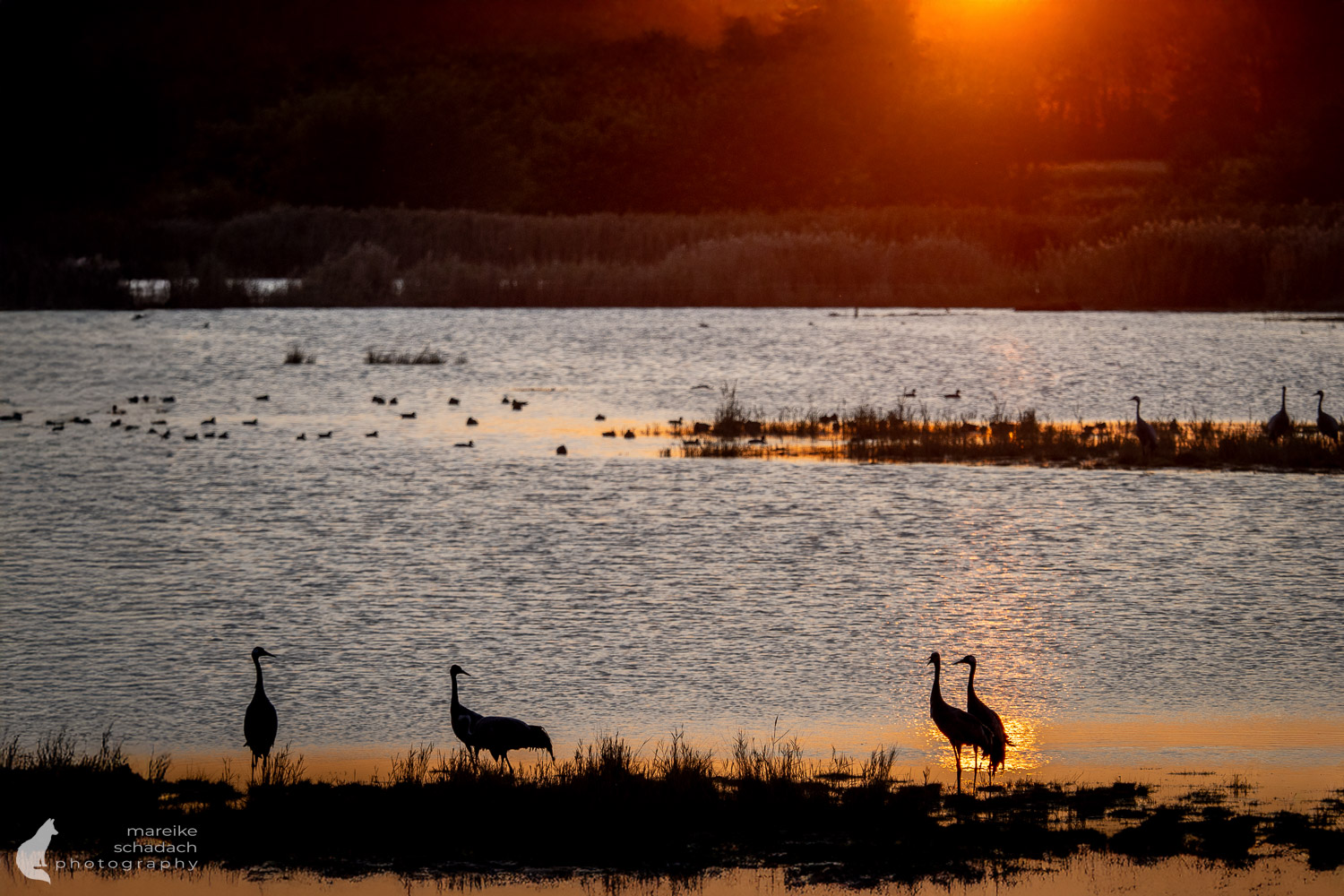
The best way to get around is on foot or by bike. However, bikes must be parked at one of the bike parking areas before the circular trail, as they are not allowed here. Horse-drawn carriages run from Prerow to the lighthouse at Darßer Ort, and the Darß Bahn takes hikers to just before the start of the Darßer Ort circular trail near the former emergency harbor.
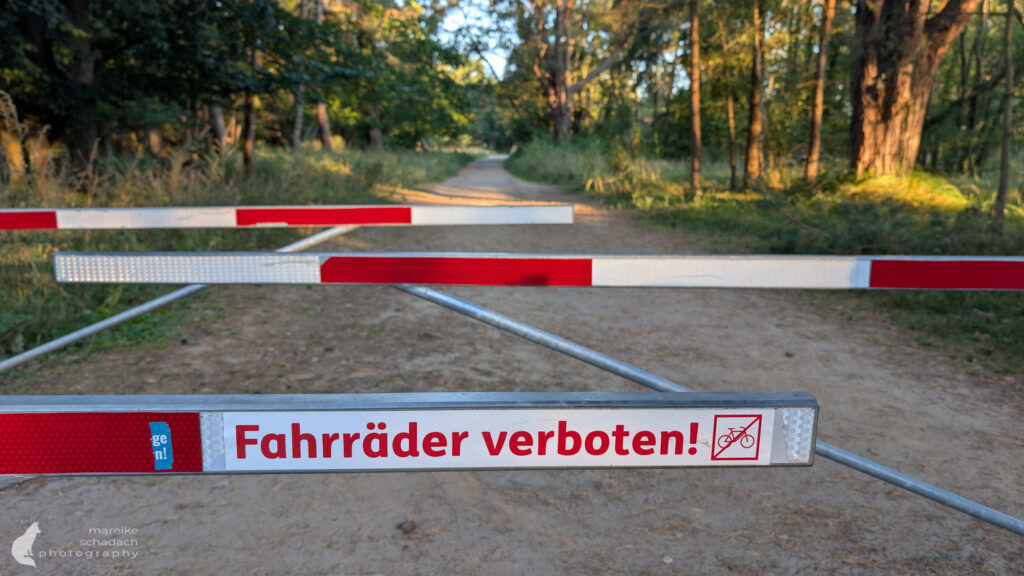
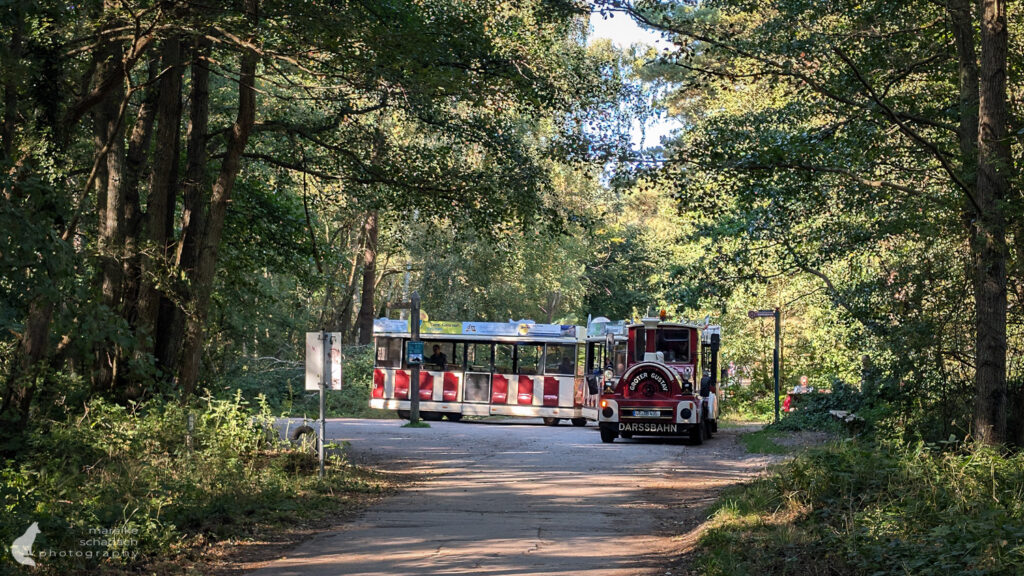
Invasion of the Jays
It's autumn, the birds are gathering and migrating to their wintering grounds. So I'm not surprised when I see one or two larger flocks. But a photo to identify the species leaves me amazed: jays in large flocks. They fly over me again and again, and I stand there with my mouth open. I have truly never seen anything like this before. On the Nabu website, I quickly learn that this invasion of jays is often associated with high breeding success in their native areas of Scandinavia and subsequent food shortages. These migratory movements can lead far into Central Europe. Most jays migrate back to their breeding grounds the following year.
The Deer – Kings of the Darß Forest
Why do so many deer live here? The answer lies in a combination of protective measures, landscape, and history. As early as the 19th century, the Darß was a popular hunting ground. Grand dukes and later Nazi officials organized driven hunts in the forest. In the GDR, parts of the Darß were declared a state hunting ground, where high-ranking politicians went trophy hunting. After 1990, the situation changed: with the establishment of the national park, traditional hunting was largely abandoned. The red deer were able to reproduce more freely without being thinned out by hunting. Today, several hundred animals live in the national park, and the population is considered stable.
The rutting season in September and October is particularly impressive. During the rut, the deer migrate to the coast and the dunes—an unusual spectacle, as we usually associate the calls of deer with deep forests or remote woodlands. The males butt their antlers against each other, scrape their hooves, and exude their typical scent to impress the females. The bellowing is not only a way of marking their territory, but also a signal to rivals: whoever bellows louder, longer, and deeper demonstrates strength.
There are various ways to experience the deer rut on the Darß.
- On your own. The best places to do this are the designated observation platforms at the former emergency harbor and along the Darßer Ort circular hiking trail.
- Among the guided tours, the so-called “deer concerts” are the best known, offered by the National Park Authority and local nature guides.
- Photo excursions and workshops are also popular with photographers, for example, at the Zingst Photo School..
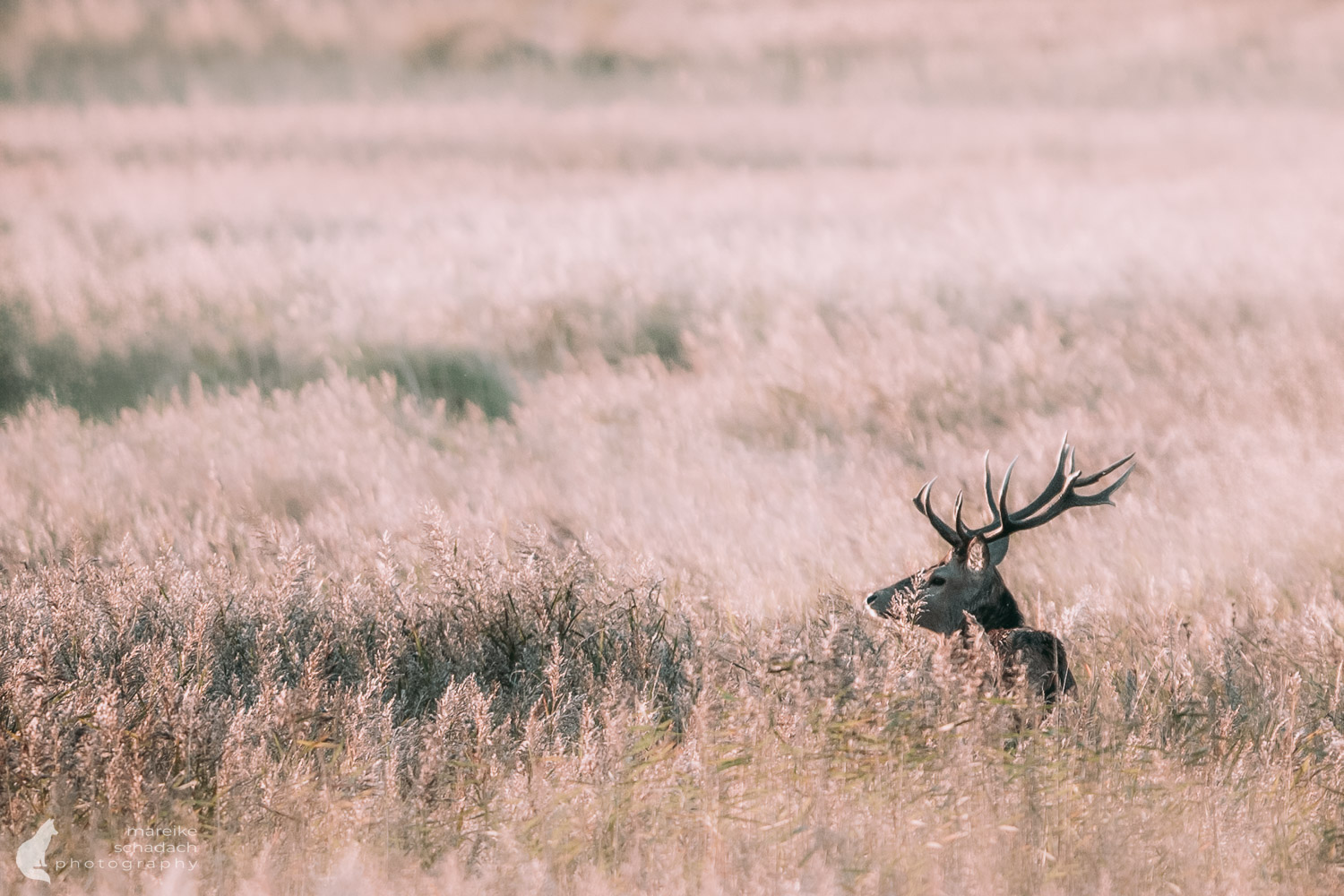

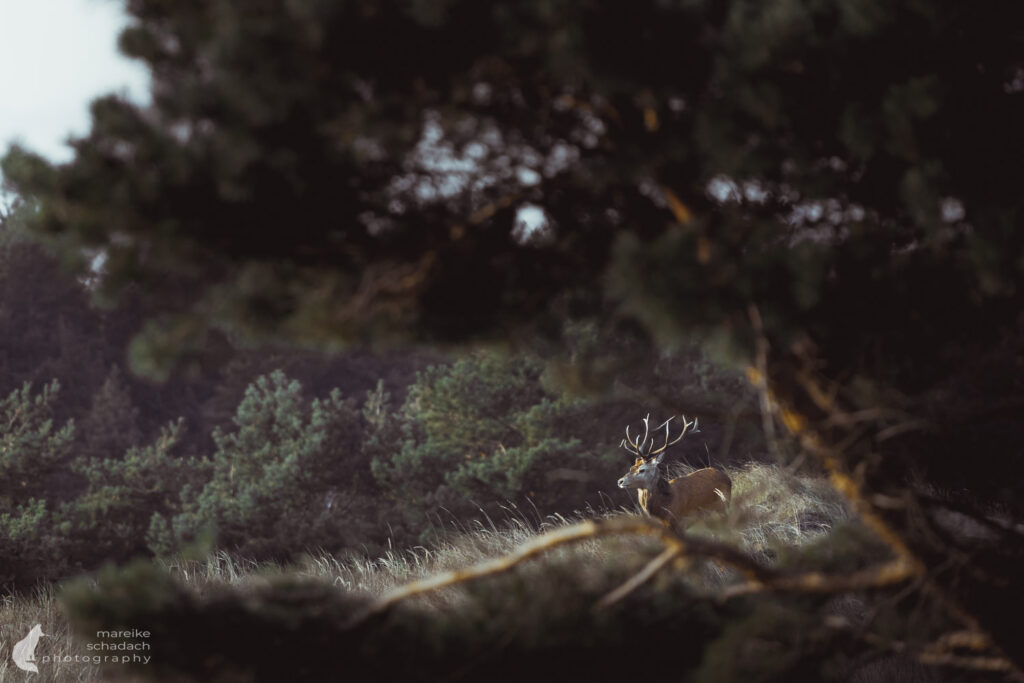
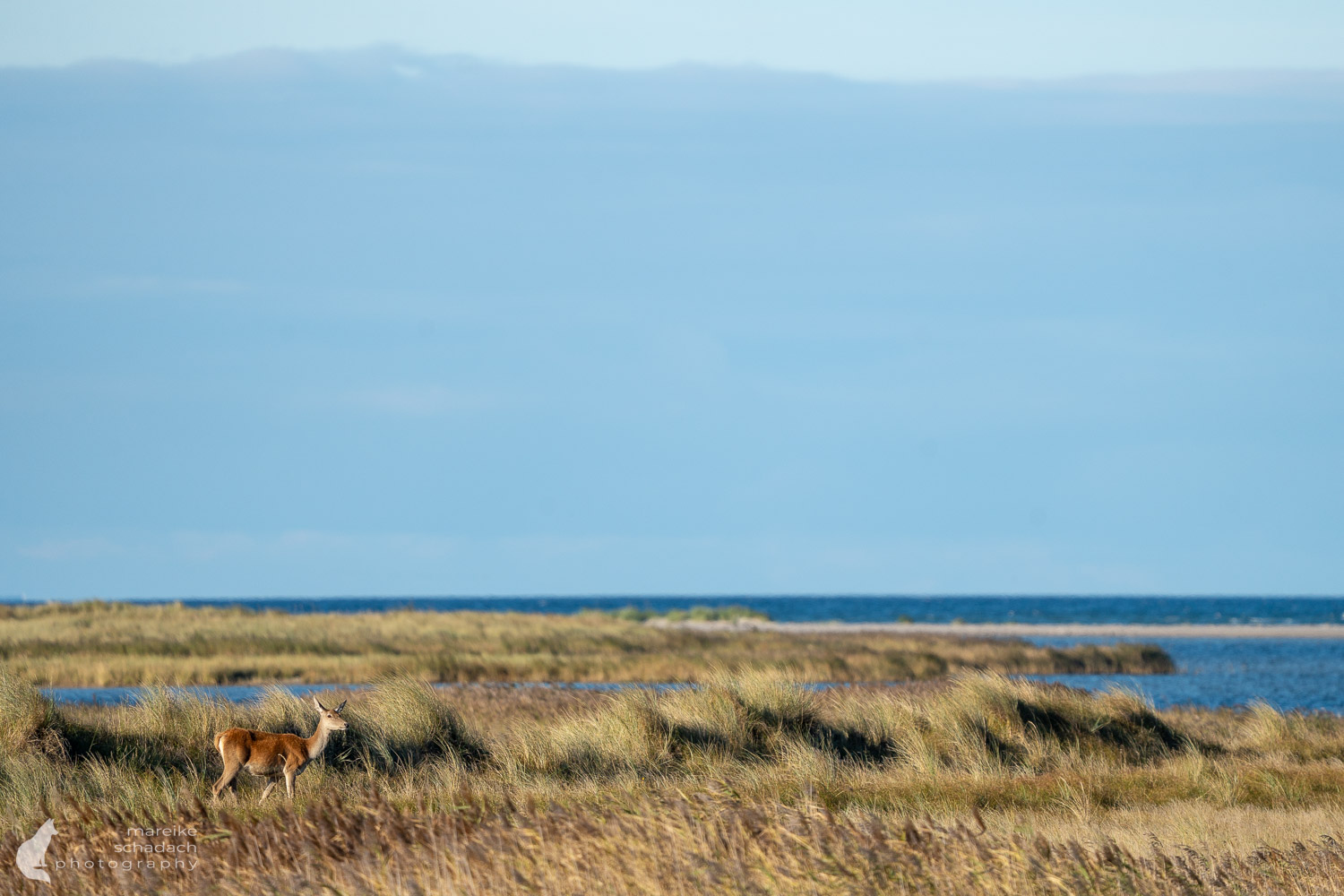
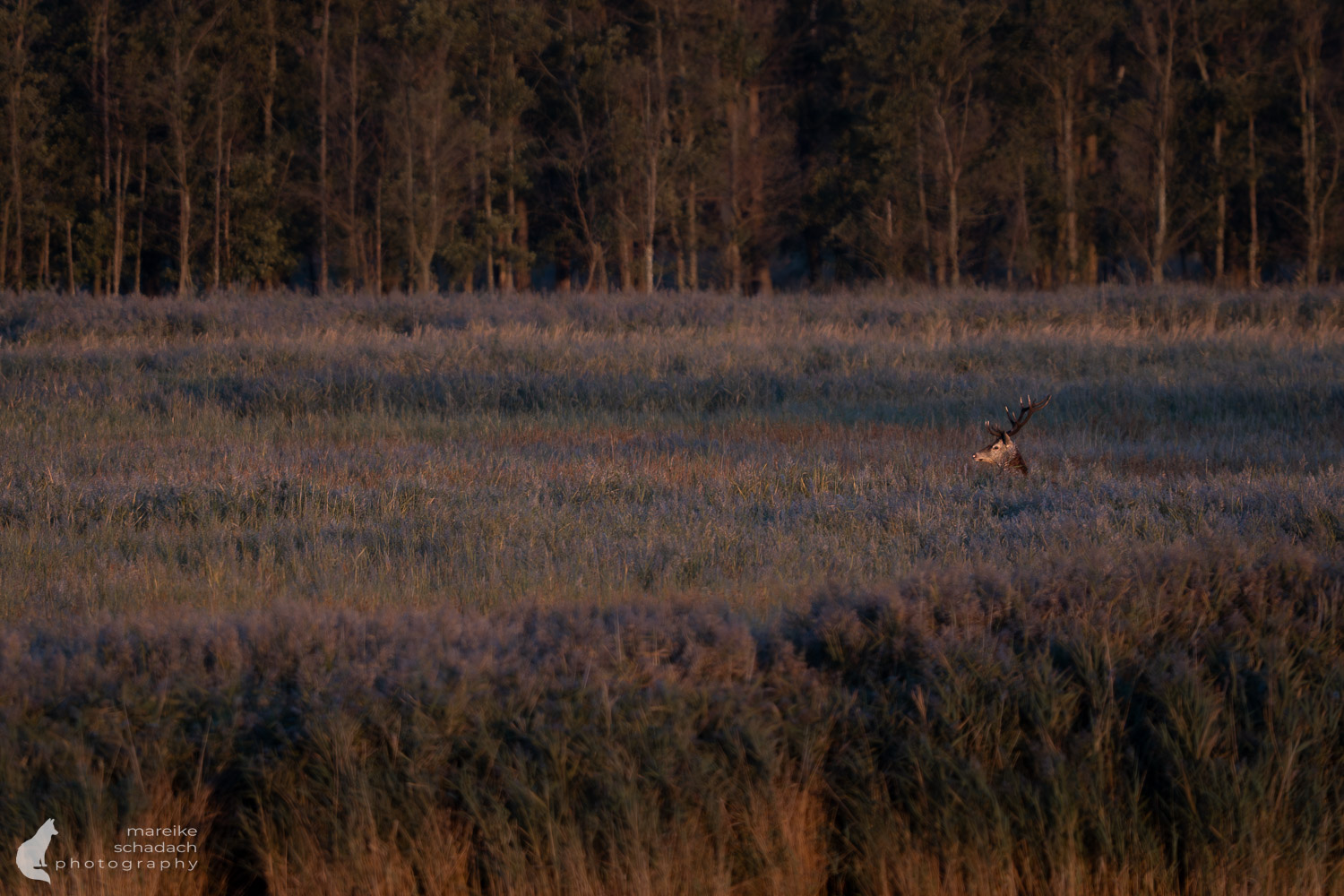

Myths and Legends
When I want to get to know a new region, I always enjoy researching local myths and legends. I found two for Darß that beautifully reflect the deep connection between the coastal inhabitants and their landscape.
Eine der bekanntesten Erzählungen spricht von den „Hirschgeistern“, die in stürmischen Nächten am Strand erscheinen sollen. Fischer berichteten, sie hätten große, schattenhafte Gestalten gesehen – Hirsche mit leuchtenden Augen und dampfendem Atem, die aus der Brandung aufgetaucht seien. Diese Geister seien keine Bedrohung, sondern Wächter des Waldes, die den Menschen eine Warnung überbrachten: Wer sich in solchen Nächten leichtsinnig aufs Meer wagte, den erwartete Unheil. Manche alten Seefahrer schworen, sie hätten ihr Leben nur dem Erscheinen eines solchen Geist-Hirsches zu verdanken, denn er habe sie durch ein unerklärliches Gefühl zurück an Land gedrängt.
Other legends surround the sunken villages along the coast. During heavy storms, the ringing of bells can be heard from the waves—bells that once belonged to churches that have long since been swallowed by the sea. One often-told example is the village of Vineta, which, according to folklore, sank not far from here. Its inhabitants are said to have incurred the wrath of the sea through greed and arrogance. Today, some locals believe that the roar of the waves against the groynes sometimes actually sounds like the muffled ringing of bells.
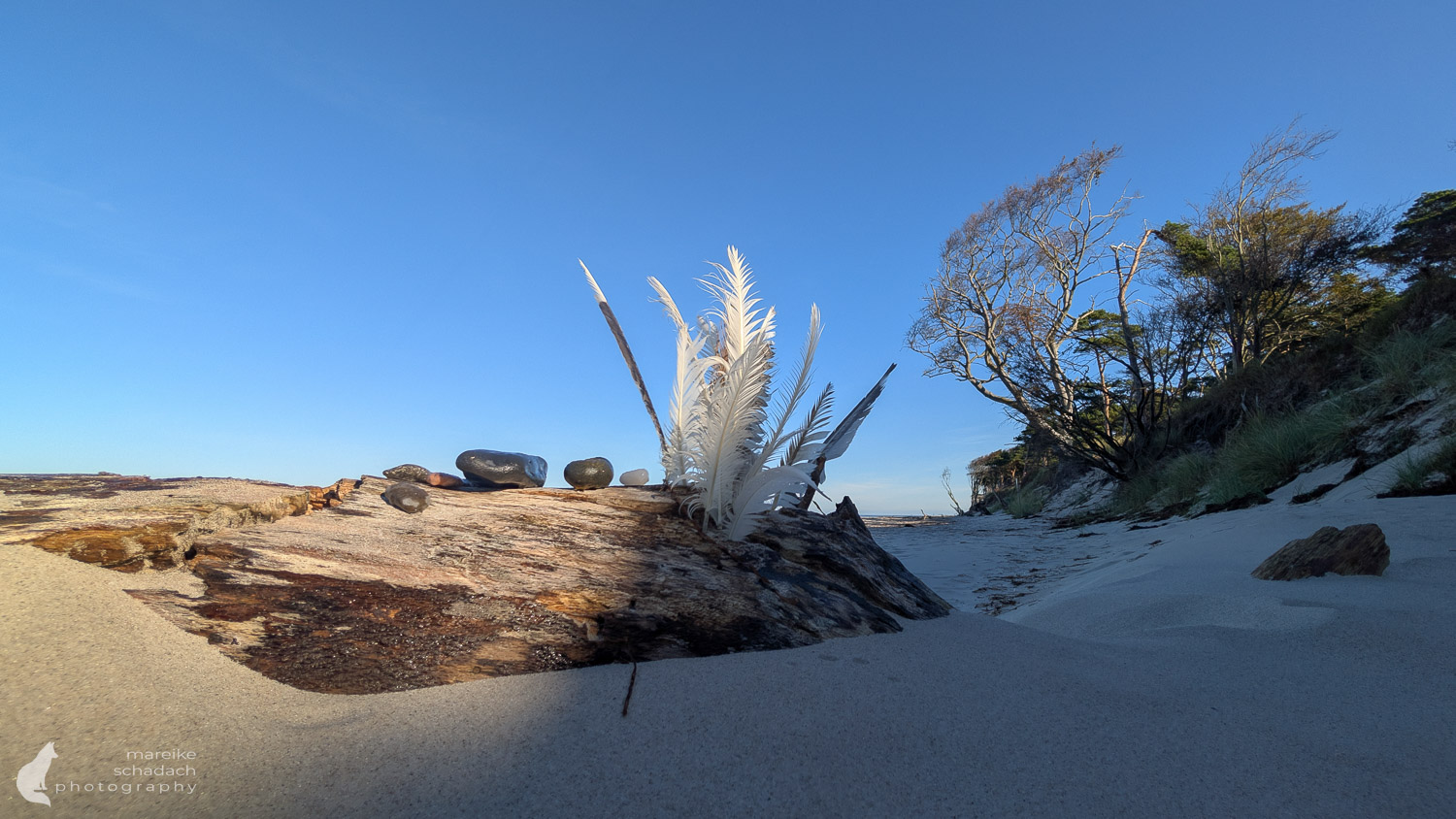
Ending the Evening with Deer
It's my last evening on the Darß peninsula. I find it difficult to choose between my two favorite observation platforms. In the end, I decide on the jetty at the former emergency harbor. This is where my deer observations began with my morning coffee. I wrap myself up and pull my scarf a little tighter around my neck. Standing still in the wind is tough, and the deer are taking their time today. But my patience is rewarded in the end, and the soft evening light shows the stag and his ladies from a particularly beautiful side.

Book Recommendations for Nature Lovers
Want to learn more about nature? Then I have three book recommendations for you. You can order the books* from Amazon by clicking on the images. If you purchase a book or other item via an affiliate link, I will receive a small commission and you will help me to continue filling Fernweh-Motive with interesting articles. This does not make the product any more expensive for you.
Do you want to know when there are new articles on my blog? Then follow me on Facebook, Pinterest or Instagram. I would also be very happy if you share my article with your friends.
Recommendations for further Reading
Do you want to go birdwatching right away? Then check out my article about Birdwatching in the Pond Landscape Linum and about Neuwerk Island - Birdwatching in the Hamburg Wadden Sea .
